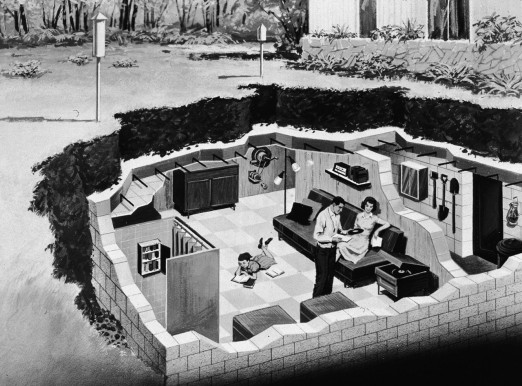A packed venue, a pulsating debate, the public comes alive at Public Space event
The venue for Wednesday evening’s debate on Public Space, had been moved from the conference rooms downstairs to the more, er…, public space alongside the New London Model. If the move wasn’t quite the ‘jumpers for goalposts’ rezoning of space of our childhoods (where any greenery became football pitches, and jumpers drew an imaginary vertical line in space) the move did capture something of the freewheeling energy among the 120-plus crowd gathered to hear four experts debate the increasingly prickly issue of Public Space.
Chaired by Alastair Donald, the panel included: Finn Williams, founder of Common Office; Kathryn Firth Director of Development/ Urban Design and Masterplanning at Publica; Phineas Harper, Deputy Director, Architecture Foundation; and Alan Miller (an excellent late replacement for Dolan Cummings) who brought passion as a co-founder of London’s Old Truman Brewery business cultural centre, creator of the recently-closed Vibe bar on Brick Lane and now Chairman of the recently launched Night Time Industries Association.
Miller’s passion on the subject of Public Space was no doubt partly driven by the conditions behind the recent closure of The Vibe Bar (part of the regenerative ecology that recreated East London in the 1990s). He spoke of the creeping and excessive regulation of the nightlife economy including the Public Spaces Protection Orders, a piece of legislation which whatever their differences, panel members seemed to visibly recoil at its mention.
Policy Irony
Phineas Harper spoke with cool irony of how the Localism Act disempowered localism, and in the Q&A afterwards noted the urban management model of Durban’s Warwick Junction markets, where the city built a loose infrastructure (cool storage spaces for vendors, sanitation, secure storage) to support the existing informal markets.
Finn Williams spoke of Arnold Circus on the Boundary Estate – home to the first council estate that opened in 1896 – of how it fell into disrepair from the 1980s, a moment when the government of the time began to shift perceptions of the value of the ‘public’ and the ‘private’, when the Public Sector was no longer seen as visionary, creative and generous. Williams explained how Arnold Circus was revived by local groups committing to take responsibility for basic up-keeping while the local authority provided long-term maintenance. The local group wrote and enabled the plan – there was no existing legislation – but ironically (is irony a principle of UK government policy?) current legislations and resource means it couldn’t happen now.
Kathryn Firth’s opening comments were read from a script – all the more interesting for the fact that it was Publica’s own attempt to provide a lexicon, for clarity, around the idea of public space. While the animated Alan Miller made compelling cases, firstly against the idea of the architect or urban planner as the designer of spaces to encourage specific social outcomes. And secondly Miller called for investment in major public infrastructure and for the creation of beautiful buildings that are inspiring and valued for themselves, because they generate activity or emotions that aren’t prescribed. Phineas Harper agreed that ‘beauty’ was a word that had dropped out of the ‘lexicon’ of modern architecture (like modern art) as a valued attribute of buildings.
No fun
In the Q&A and summing up, Harper and Williams warned against the underlying ‘anarchic’ currents during the debate, of the anti-legislative/ urban planning/ public policy arguments (in truth, this sensibility was more libertarian than anarchist). Williams also warned against the belief that the private sector on its own would provide the necessary public infrastructure on its own or would provide ‘freer’ public spaces. Harper was keen to highlight in his own summing-up, that he valued highly the work of architects and urban planners – that they’re not needless spoilers of ordinary folks’ fun.
The Chair Alastair Donald was generous in enabling the audience to speak, but the one thought this writer took away was an observation initially made by Phineas Harper – the perception by some, that the ‘public’ are people not like us, the ‘public’ as a kind of anti-matter of ‘me’, the public as a source of fear through its very difference. A fascinating, thought-provoking idea taken up by others on the panel.
But it was also a reminder that the ‘Public’ – in architecture / urban planning / public policy terms – needs to be thought of on the basis of ‘difference’ rather than as something homogenous. So while we may not be like the stag-night mankini ‘streakers’ who occasional add to our nightlife ecology, human/cultural biodiversity is essential in any vision of the Public.
Click here for info on the next Future Cities Salon, Crisis is the New Normal

